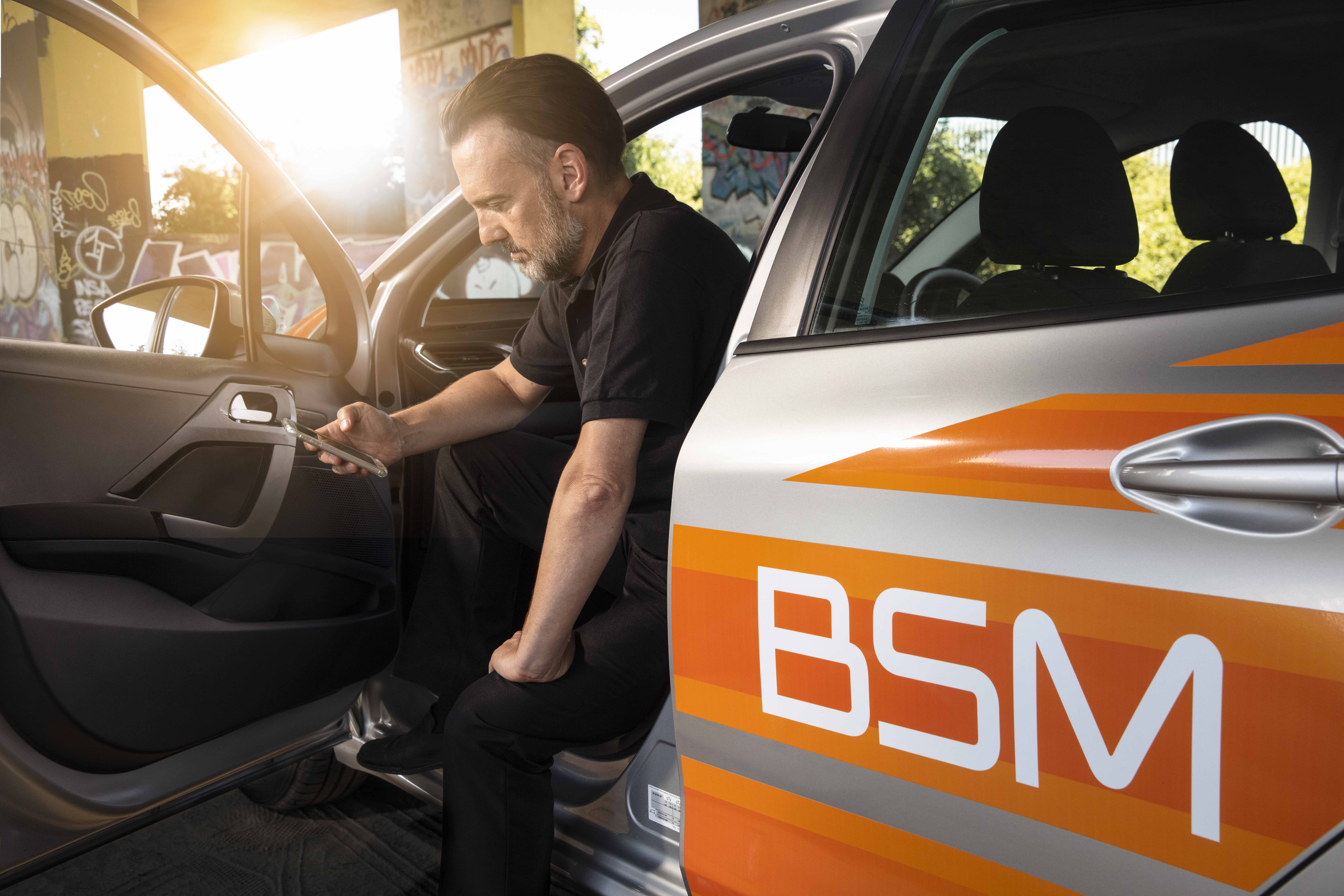Everything You Need to Know with BSM
Guide to Parallel
Parking

Parallel Parking: Need to Know
Beginners’ guide to parallel parking
Parallel parking is a manoeuvre with a reputation that precedes it. The chances are that even if you don’t know what it is, you’ve heard of it, and know that it occasionally causes trepidation in drivers.
Reverse parallel parking is something you’ll have to master though. Not least because it may well feature in your practical driving test. But also you’ll have to do it frequently if you drive in urban areas – especially if you live somewhere with on-street parking.
With this in mind, here’s BSM’s step-by-step guide to parallel parking for learner drivers.
What is reverse parallel parking?
This is a manoeuvre involving parking at the side of the road, usually in a line of parked vehicles. The ‘parallel’ in parallel parking refers to the position you want to achieve, which is in line with the kerb. You also want to end up nice and close to it.
If you have to perform this in your driving test, you’ll be asked to park behind another vehicle, which means reversing into the spot.
How do I reverse parallel park?
The way learner drivers are usually taught to parallel park is called the 1-2-1 method, which we’ll take you through here. This involves pulling up next to the vehicle you want to park behind, then reversing in. It’s possible to get into tighter spots reversing than it is going forwards.
The ‘1-2-1’ refers to the ways you’re going to turn the steering wheel – one turn to the left, two turns right, one turn to the left.
For this explanation, we’ll assume that we’re parking on the left-hand side of the road, and the other parked vehicle is facing forwards.
Step one: Signal and stop
On approaching the space you’re going to park in, indicate left, and come to a halt alongside the space. Stopping next to it means you can check your car will definitely fit. There should be enough room for a two-foot gap both in front and behind your car.
Next, position yourself alongside but slightly further forward than the vehicle you’re about to park behind. For reference, aligning the centre of your passenger-side window with the front bumper of the other vehicle is a good starting position.
Step two: Check it’s safe, and start to reverse
Now use your mirrors to check it’s safe all around the car. Also check your blind spot. Make sure you’re not causing a hazard to other road users or pedestrians before you begin. It’s ok to wait until any potential danger has passed.
Look over your left shoulder and through the rear window. Now begin to reverse. All of your reversing should be done slowly and steadily.
Stop the car when your back wheels are roughly aligned with the other vehicle’s back bumper.
Step three: Full turn to the left
While stationary, turn the steering wheel one full turn to the left. Before you reverse again, check for any potential hazards. This includes traffic coming in the opposite direction, as you’ll swing out slightly into the road when you begin to move.
When it’s safe to go, start to reverse. You’ll need to check your mirrors. Your left-hand wing mirror shows how close you are to the kerb, and your rear-view mirror will give you an idea of how close you are to anything behind you.
When you’re clear of the vehicle in front, and you can see the kerb in your wing mirror, stop the car again.
Step four: Two turns to the right
Again while stationary, turn the steering wheel into full lock (ie two whole turns) to the right. When you begin reversing again, the front of the car will start to tighten to the kerb.
When the car draws level to the kerb, stop.
Step five: One turn to the left
At this point, your front wheels will be pointing out to the right. You want them to be pointing straight ahead, along with the flow of traffic.
Turn the steering wheel one full turn to the left. All being well, you’ll now be nice and tight to the kerb, and facing straight ahead. If it’s not, and you need to make a few adjustments, it’s fine to do so. In fact, it’s better to correct yourself on your driving test than to leave the car wonky. Even seasoned drivers don’t always get parallel parking right first time.
How do I parallel park to the right?
If you need to parallel park on the right-hand side of the road, you basically do it the same way, but swap left with right and vice-versa. In other words, the 1-2-1 method goes once right, twice left, once right. You might even find it easier to do it this way, as your eyes are closer to the kerb and other vehicles.